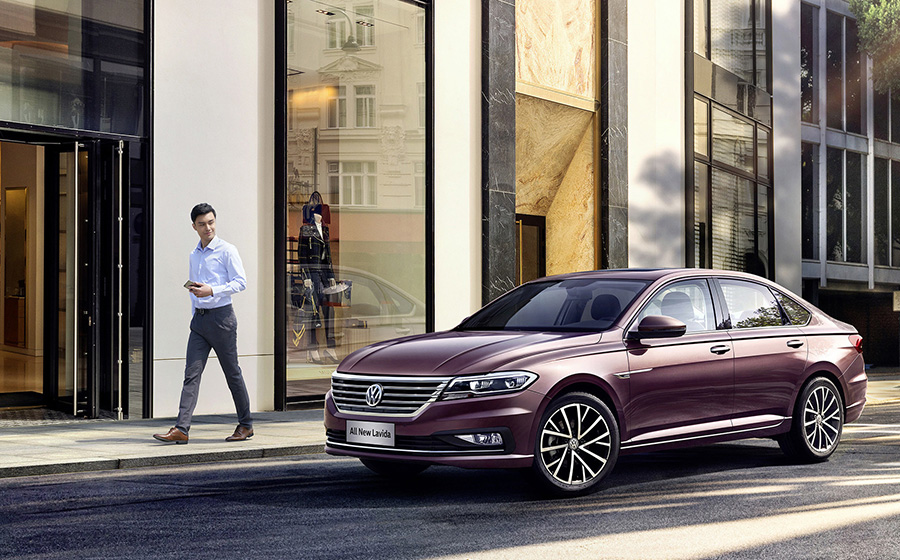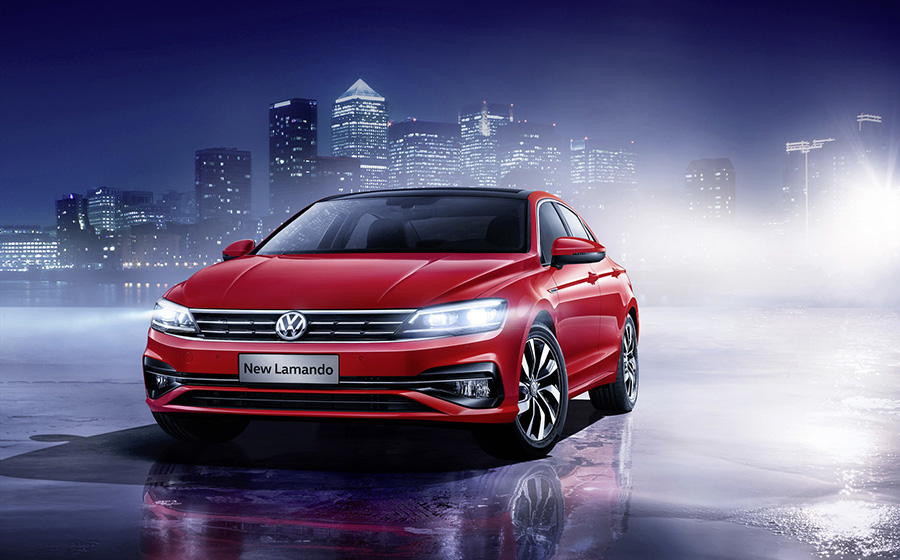European customers love compact hatchback models such as the Golf, which has led registration statistics for more than four decades. In contrast, compact notchback models dominate the world market: they account for almost a third of all deliveries to customers for the Volkswagen brand; in China alone there were 1.6 million vehicles. According to the high demand, six models are offered there. A market overview of the Chinese “local heroes” with notchback shows the differences in detail.

Longer wheelbase and comfort on all seats, plus a large trunk: this is a decisive factor for many Chinese car buyers, which is why notchback models are more successful there than short-tail vehicles. Volkswagen meets this need with sedans that have been developed for this market. With the SAIC-Volkswagen and FAW-Volkswagen joint ventures and the JETTA sub-brand, the brand offers six independent models in the most important individual segment that are geared towards Chinese needs. In 2019, Volkswagen won additional shares for the brand in its largest single market with these vehicles. The models at a glance:
JETTA VA3
With JETTA in 2019, for the first time in the company’s history, a model, the Jetta sedan, which had been extremely successful in China for years, became an independent sub-brand – with its own dealer network. Adding up the sales figures of the previous Jetta and Jetta VA3 for the transition year 2019, more than 145,000 units were delivered to customers. The vehicles are produced in Chengdu. The Chinese model has only the name in common with the Jetta available in North and South America: it is much more compact with a length of 4.50 meters, has an 82 kW 1.5 liter naturally aspirated engine and is aimed primarily at younger first-time buyers.

FAW-Volkswagen Sagitar
The Sagitar has been built by FAW-Volkswagen since 2006, today in Changchun and Chengdu. It is an MQB model and is available with either a 1.2 liter TSI (85 kW) or a 1.4 liter TSI petrol engine with turbocharging (110 kW). Since 2019, the third generation has been sold in China as a long version – with a wheelbase of 2.73 meters, while, for example, that of a Jetta is 2.69 meters in North and Latin America. in the year of the model change, almost 310,000 customers opted for the Sagitar, including more than 176,000 for the new model.

SAIC Volkswagen Lamando
The Lamando has been produced by SAIC Volkswagen in China since November 2014. As a four-door notchback coupe with a wide body (1.82 meters) and a height of 1.42 meters, it is comparatively flat. The model is also based on the MQB and has a wheelbase of 2.65 meters with a total length of 4.60 meters. The Lamando is offered with a 1.4l TSI four-cylinder in two output variants (96 and 110 kW), both with dual clutch gearbox DSG. Since 2016 there has also been a sporty GTS variant with a 2.0l TSI engine (162 kW). More than 101,000 Lamando were delivered in 2019.

FAW-Volkswagen Bora
The successful Bora in China no longer has any technical connection to the Bora at the turn of the millennium as the western markets know it. FAW-Volkswagen delivered 323,400 units to customers last year. It is also an MQB model and is available either as a 1.5 liter naturally aspirated engine (83 kW) or as a 1.4l TSI petrol engine with turbocharging (110 kW). In addition, the e-Bora now also an electrically powered version. The Bora is 4.66 meters long, 1.81 wide and 1.46 meters high and has a wheelbase of 2.69 meters.

SAIC Volkswagen Santana
This model, which is successful in China, also has nothing in common with the angular Ur-Santana based on the second Passat generation, which is still known in Germany from the 1980s. While it had not been available to buy in Germany since 1985, it was still manufactured in China as a notchback and estate version based on the Passat. Since 2013 there has been an independent version in China, which was specially developed for the Chinese market. It is 4.48 meters long, 1.71 meters wide, 1.47 meters high and its wheelbase is 2.60 meters. Around 245,000 of these were sold last year.

SAIC Volkswagen Lavida
The third generation of the Lavida from SAIC-Volkswagen has been on the market since May 2018 – this model is also only available in China and has been specially developed with the preferences and needs of local customers in mind. The current Lavida generation is based on the MQB and is as successful in China as the Passat in Germany: In 2019, the Lavida was the best-selling model of all manufacturers with 491,000 cars – but hardly anyone in Germany knows the Lavida. It is available with a naturally aspirated 1.5l engine with 85 kW or a 1.4l TSI with 110 kW, its wheelbase is 2.68 meters and the body dimensions are 4.67 meters long, 1.81 meters wide and 1.47 Meters height. As with the Bora, there is also an electric version: the e-Lavida shares the drive with the Chinese version of the e-Golf .
Successful in China for over 30 years
The Volkswagen Group produces vehicles for the Chinese market with two joint ventures in China. In 2019, the Volkswagen brand and the JETTA sub-brand delivered a total of 3.16 million vehicles. The foundation stone for today’s success in China was laid almost 40 years ago: In 1983 the first vehicle, a Santana, was built by the Shanghai Volkswagen joint venture, today known as SAIC Volkswagen. In 1991, FAW-Volkswagen, the second joint venture in China, made the first car locally, a Jetta. The Volkswagen Group China currently employs more than 100,000 people in the country.
The corona pandemic forced Volkswagen employees to stop production in China as well as now in Europe, but the auto industry is slowly returning to normal. Vehicles and components are produced again at almost all Chinese Volkswagen locations. According to a survey conducted by the Ipsos market research institute in March, the consequences of the epidemic have also changed Chinese attitudes towards individual mobility: two thirds of the 1,620 respondents who do not have their own car want to buy one within the next six months. Three out of four first-time buyers state that protection against infection is the motivation for their desire to buy: the car climbed from third to first place among the preferred modes of transport.









